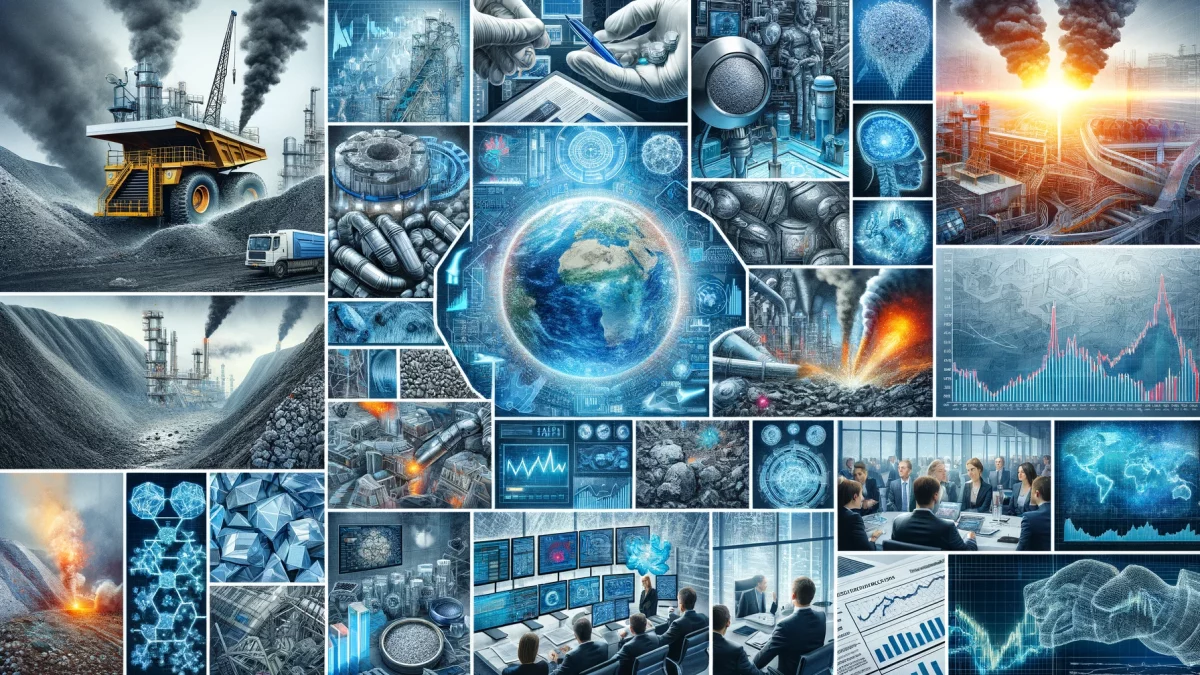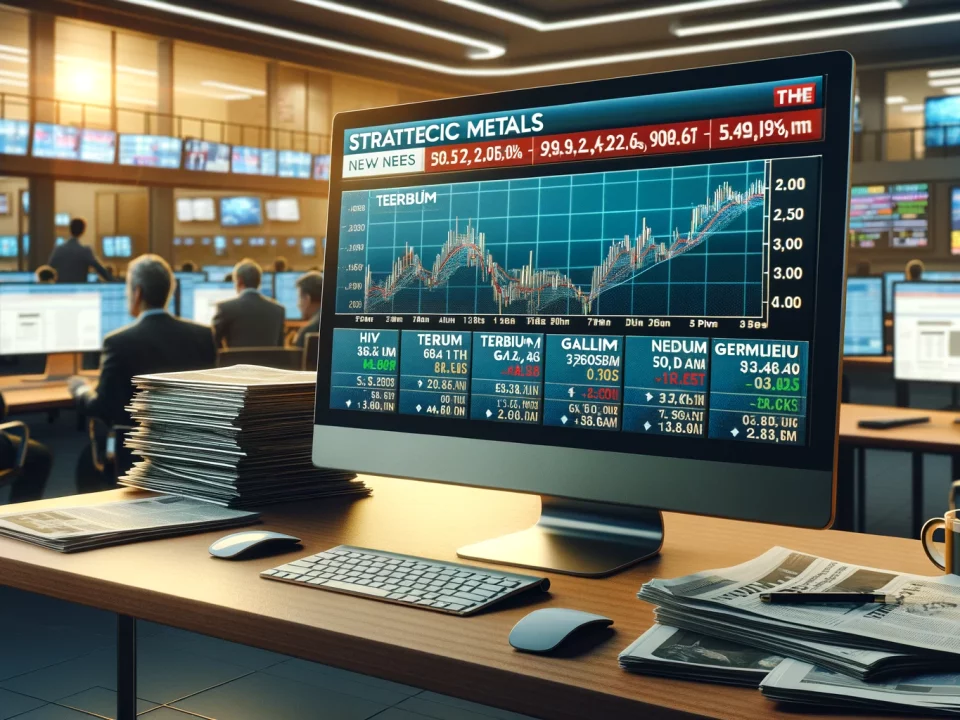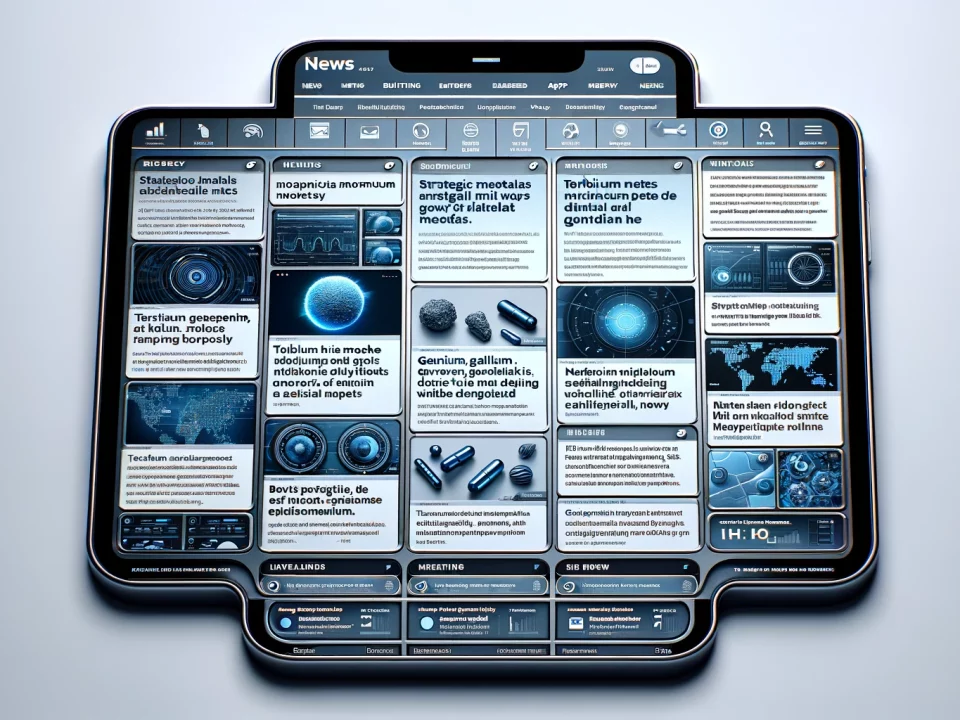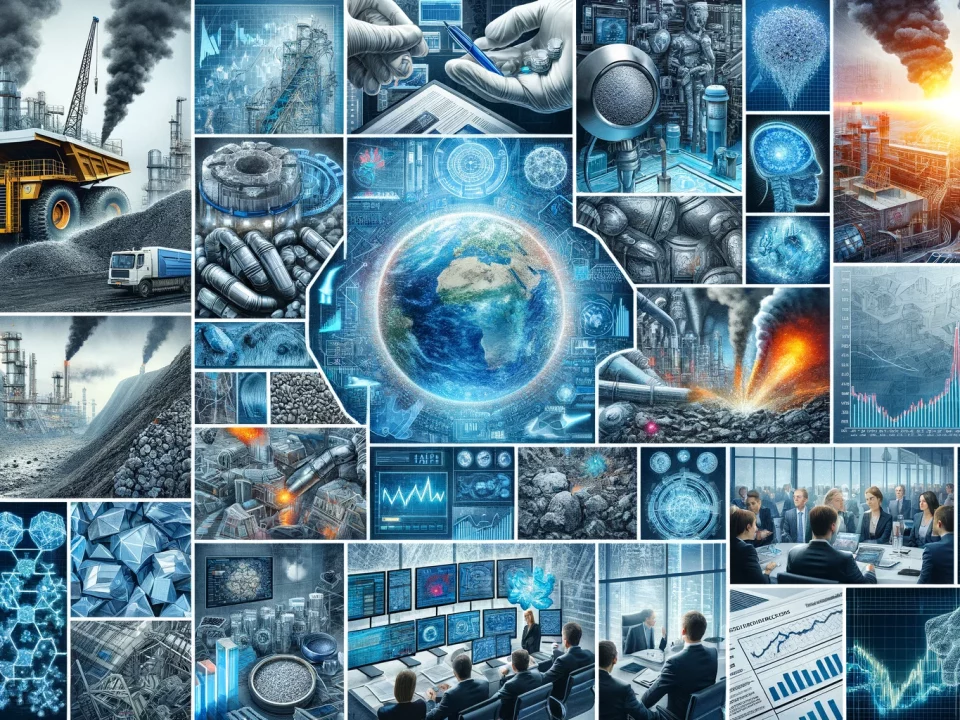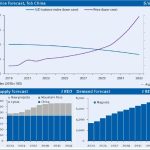
10-Year Demand, Supply, and Price Forecasts for Dysprosium, Praseodymium, Neodymium, and Terbium
April 24, 2024
Weekly News Review Apr 29 – May 5 2024
May 5, 2024Welcome to our weekly news review.
COMPUTER CHIPS: US TO PROVIDE $6.14 BILLION IN SUBSIDIES TO MICRON –
President Biden unveiled the agreement in New York on Thursday—investment aimed at boosting domestic production.
In its latest move to strengthen domestic chip and semiconductor production, the United States will provide Micron Technologies with $6.14 billion in subsidies under the Chips and Science Act. According to a preliminary publication by the White House, President Joe Biden is set to travel to Syracuse, New York, later today to officially announce the struck agreement between Micron and the Department of Commerce.
The funding is the latest in a series of events, following Samsung and TSMC earlier this month. Micron will use the funding for two fabrication plants (fabs) in Clay, New York, and Boise, Idaho. The government funding will be accompanied by $50 billion in investments from Micron. The company plans to ramp up its total investment into the two states to $125 billion over the next two decades.
U.S. President Joe Biden signed the Chips and Science Act into law in 2022, providing $52.7 billion in financial support and subsidies for domestic semiconductor research, development, and production. In addition, lawmakers approved $75 billion in government loans.
CHINA: EXPORTS OF GALLIUM AND GERMANIUM REMAIN BELOW LAST YEARS LEVEL –
According to the latest figures from the Chinese customs authority, China’s exports of gallium and germanium continue to remain below last year’s level. In March, the People’s Republic exported 3,206 germanium and 1,214 kilograms gallium. Compared to the same month last year, there is a considerable decline in exports of the two technology metals used in civilian and military technologies.
The trend for gallium is particularly drastic: while it stood at 6,480 kilograms in March 2023, exports have now plummeted by more than 80% in direct comparison. The decline in germanium exports was less drastic but is still around 30 percent lower than the 4,702 kilograms in the same month last year. Compared to February, however, exports have risen slightly. Germanium exports rose by 16 percent, and gallium exports grew by just over one percent.
In August last year, Beijing introduced export restrictions for the two critical raw materials, which continue to influence the market. China is the leading producer of these and many other critical raw materials.
RARE EARTHS: UNPRECEDENTED RESULTS FROM BRAZIL –
Last week, the results of two clay-hosted projects showed remarkable potential.
According to data from the United States Geological Survey (USGS), Brazil has one of the world’s largest reserves of rare earths but mines only a few deposits. This is bound to change soon, as numerous companies from various countries have long recognized the potential of the Latin American country’s resources.
New study results of two deposits fuelled the topic further. Australian mining company Viridis Mining and Minerals Limited announced it had achieved the world’s highest overall bulk ionic recoveries with rates as high as 63 percent (PDF). Viridis’ Colossus project in the Eastern state of Minas Gerais is a so-called ionic adsorption clay deposit. In this deposit form, ores are hosted in decomposed rocks formed by intense weathering and primarily found in tropical and subtropical areas.
These deposits are the primary source of the so-called heavy rare earth elements, such as dysprosium and terbium. These elements occur significantly less often and are more expensive than their light counterparts, like neodymium. They are mined via chemical leeching processes, which require fewer traditional mining activities.
Currently, only China and neighboring Myanmar mine this form of deposit.
Chief Executive Officer Rafael Moreno commented on the record results, emphasizing that the company believes the results support “the foundation for building Colossus into the premier ionic adsorption clay (‘IAC’) deposit globally.” Regarding environmental and economic concerns, Moreno added that the minerals in the project can be extracted “simply by washing the clays with a salt solution at room temperature, e.g., Ammonium Sulfate.” He added that compared to regular hard-rock projects, Viridis’ deposits would not require production steps such as blasting, acids, high temperatures and pressures, toxic fumes, and radioactive waste streams to extract the contained rare earth elements.
FROM THE EAST TO THE AMAZON:
On the other side of the country, in the state of Amazonas, the Australian mining company Brazilian Critical Minerals, aptly named for its focus on the Latin American country, also announced test results for a rare earth project (PDF). Results for the company’s Ema project, in which the discovery of rare earth elements was announced just last year (PDF), show a substantial maiden mineral resource estimate of over one billion tons. A maiden resource estimate is the first time a resource amount has been announced or compiled to modern standards.
According to the company, the Ema project is also an ionic adsorption clay deposit that requires few traditional mining steps, similar to Viridis’ Colossus project. Brazilian Critical Minerals also plans to use an ammonium sulfate leaching solution to extract the minerals. Managing Director Andrew Reid added that only 46 percent of the total area has been drilled so far, and the resources could thus be increased with the next round of test drills planned for the coming months.
RARE EARTHS: US FIRM ENERGY FUELS ACQUIRES BASE RESOURCES TO FORM “GLOBAL LEADER”
The acquisition is critical in securing feedstock for Energy Fuels’ White Mesa rare earth processing facility in Utah.
The U.S.-based uranium and rare earths producer Energy Fuels will acquire the Australian rare earth miner Base Resources for $240 million (A$375 million), creating a “global leader” in the industry.
According to a press statement by Energy Fuels, the transaction will enable the company to become globally competitive by incorporating quality raw materials from Base Resources’ Toliara rare earth project in Madagascar into its supply chain, creating a vertically integrated rare earth production. Toliara is in the middle of its developing phase and is expected to commence production in 2027.
The mineral concentrate is set to be processed in Energy Fuels’ White Mesa Mill in Utah, the only operating processing facility for uranium and vanadium in the U.S., which is capable of processing rare earth elements. The company added that the material from Toliara will eventually supply a large portion of White Mesa. Energy Fuels also said it expects Toliara to rival global competitors in terms of costs, including those in China, the market leader of rare earths.
FROM URANIUM TO RARE EARTH ELEMENTS:
Energy Fuels was initially focused solely on uranium but has since expanded into the rare earth business. In 2021, the company made headlines by partnering with Neo Performance Materials to create a new U.S.-to-Europe rare earth supply chain. This was followed by announcing plans to expand operations at its White Mill facility and incorporate the final refining steps of the rare earth value chain.
In the last few years, Energy Fuels has continuously signed new deals to secure feedstock for the plant. For example, a joint venture with Astron, the Donald Rare Earth and Mineral Sands Project in Australia, is set to start production in 2026. In addition, Energy Fuels plans to mine rare earths in its Bahia project in Brazil, which is currently in the exploration phase with no targeted production start set.
DESPITE THE RENEWABLE ENERGY BOOM, COAL REMAINS IMPORTANT TO CHINA –
A new report examines the energy transition of Asia’s largest economy.
China is a leader in expanding renewable energies, yet it emits 33 percent of global CO2 emissions in the energy sector. China’s energy policy is essential in achieving the global targets for more climate protection. However, Asia’s largest economy is not aiming for climate neutrality until 2060, ten years later than the European Union.
In a new report, DNV, a company specializing in risk management, has examined the premises China is following in its energy transition. The policy is primarily aimed at economic autonomy and the domestic economy’s resilience to market dynamics and trade tensions. Accordingly, coal will remain important for a long time, with a significant decline in its use by a third not forecast until 2040.
According to the report, this energy source will be the backbone of energy security until then. By 2050, the energy mix will be sustainable at 88 percent wind power, photovoltaics, and the like. Even now, 38 percent of the world’s wind energy is generated by plants in China.
Thanks to its natural resources, China can draw on necessary raw materials, such as rare earths, to expand renewable energies. Beijing secures other resources through investments abroad, such as nickel from Indonesia.
DESPITE CHALLENGES, IEA SEES UNCHECKED GROWTH IN ELECTRIC CARS –
Battery supply chains are well positioned; affordability and charging infrastructure are crucial for rapid uptake.
Global sales of electric cars continue to grow, with 17 million vehicles expected to be sold by the end of the year, despite challenges in some markets, such as expired purchase incentives, high inflation, and fluctuating prices for battery metals. This is the conclusion the International Energy Agency (IEA) reached in this year’s Global EV Outlook.
It goes on to say that global sales of electric cars will increase by 35% to almost 14 million by 2023. In China, the U.S., and Germany alone, half a million battery-powered e-cars were newly registered last year. By 2030, every third car in China will be an e-car, and almost every fifth car will be in the U.S. and the EU. By 2035, the IEA expects every second car sold worldwide to be electric, based on today’s political framework conditions.
The “global electric car revolution” does not appear to be slowing down but is entering a new phase of growth, said IEA Executive Director Fatih Birol. Nevertheless, the pace of the transition will remain the same; according to the report, affordability and the charging infrastructure are the keys to future growth.
On the other hand, the IEA considers the global capacities for producing the required batteries well positioned; thanks to high investments in the last five years, these could keep pace with the sharp rise in demand. However, mining and refining must continue proliferating to ensure robust supply chains. In this context, the IEA points to new opportunities that companies and investors are currently exploring in the face of increased competition, such as direct agreements with battery manufacturers and producers and processors of raw materials.
REMARKABLE QUALITIES: NEW ALLOY FOR FUTURE ENGINES –
Material made of niobium, tantalum, titanium, and hafnium exhibits astounding properties.
A team of U.S. researchers has developed a metal alloy made of niobium, tantalum, titanium, and hafnium that outshines other materials with its unusual properties. Nb45Ta25Ti15Hf15, as it is called, looks spectacular under the microscope and can withstand both extreme heat and cold without permanently deforming, cracking, or breaking – a combination that, according to the scientists, previously seemed almost impossible to achieve. This enormous resilience could be a first step in developing next-generation, highly efficient aerospace engines, as the highest possible operating temperatures are required in this field of application.
The hotter the temperature at which fuel is burned, the more efficiently the heat is converted into electricity or thrust, explains lead author David Cook from the Lawrence Berkeley National Laboratory in California. One limitation, however, is the materials that can withstand this. Because current materials can no longer be further optimized for high temperatures, there is a great need for new metallic materials, says Cook.
The four metals are already standard superalloy components, suitable for high temperatures and intense mechanical stresses. The material developed by the U.S. researchers belongs to a new class, the so-called high or medium entropy refractory alloys (RHEAs/RMEAs).
Unlike many conventional alloys, which consist of a central metal with small amounts of other elements, they are produced by mixing almost equal amounts of metallic elements at very high melting temperatures. This gives them unique properties that are currently the subject of intensive research and have yet to be fully unraveled.
20 TIMES STRONGER THAN CRYOGENIC STEEL:
The team led by study leader Robert Ritchie from Berkeley Lab also experienced a surprise during their studies. From previous work with RHEAs and RMEAs, the researchers knew that these materials are solid but are among the most brittle metals. They were downright shocked when Nb45Ta25Ti15Hf15, on the other hand, exhibited exceptional toughness, says author Punit Kumar.
The new alloy is over 25 times tougher than typical RMEAs at room temperature and even 20 times tougher than so-called cryogenic steels, which are hardened by extreme cold and specially developed for fracture resistance.
LYNAS CORP AUSTRALIA: DECLINE IN SALES, BUT POSITIVE OUTLOOK –
CEO Lacaze sees rising prices for rare earths.
Lynas reports a sales decline of almost 30 percent for the March quarter. The Australian group, which specializes in rare earths, attributes the development to the low price level for this raw materials group and the company’s decision to sell less material from its stock against this backdrop. According to Lynas, the price environment has improved since April.
One reason for this is that the Chinese economy continues to gain momentum, said CEO Amanda Lacaze at the presentation of the quarterly figures.
The company is prepared for a resurgence in demand, as production has increased significantly following modernization measures at the Malaysian refinery.
Meanwhile, the construction of a refinery in Australia is making progress. However, construction is becoming more expensive. The first earthworks for a rare earth processing plant in the United States are also expected to take place at the end of this year.
EU CRITICAL RAW MATERIALS ACT: LITHIUM AND RARE EARTH –
“Lithium and rare earths will soon be more important than oil and gas,” European Commission President Ursula von der Leyen said in her State of the Union address 2022. Two years later, in April 2024, the EU passed the Critical Raw Materials Act (CRMA) into law in a landmark accomplishment seeking to strengthen the union’s critical raw materials supply chains.
The act’s main provisions include domestic targets for mining, processing, and recycling and a limit on imports from individual nations for each strategic raw material.
The CRMA lists 34 Critical Raw Materials, of which 16 are subdivided as Strategic Raw Materials, as those deemed “crucial” by the EU for strategic technologies used for electromobility, renewable power generation, and digital, defense, and aerospace applications. In its classification, the EU considered what raw materials are strategic to the region and the product specifications needed to support demand from the applications above (e.g., battery grade, metallurgical grade, etc.).
In our whitepaper, in cooperation with Adamas Intelligence and TRADIUM, we examine the legislation’s key provisions in the context of the battery metal lithium and rare earth elements used to produce advanced permanent magnets. The two raw materials are essential for decarbonization efforts and modern technologies, but their outlook differs significantly. Europe is well positioned to meet or exceed targets for lithium across all four pillars: extraction, processing, recycling, and supply diversification.
The situation for rare earths is more complicated. The region is likely to meet 2030 extraction or processing targets across the entirety of the value chain with an expedited, concerted push from governments and industry and the incorporation of the public.
The whitepaper is available upon request. Please contact us for a copy.



